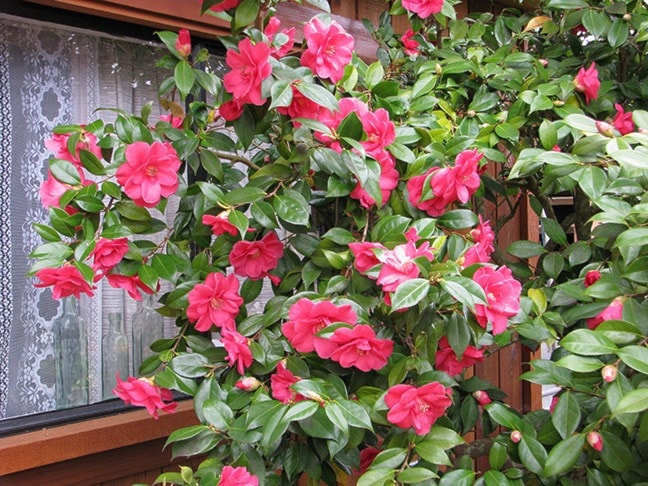Leslie Cox
Special to The Record
Good news! Well, mostly good news.
I checked our 50-year-old camellia shrub over recently. Last winter, it was looking quite sickly. There were a number of yellowing leaves, covering almost half of the shrub, and many of those were covered in a black, sticky, soot-like substance. Flipping those yellowed leaves over, I discovered quite a number of rectangular-shaped, white, fluffy objects.
Turns out, our camellia shrub had been infected by cottony camellia scale (or Pulvinaria floccifera, to be botanically correct). And what I was seeing on the underside of the leaves last winter were the empty egg sacs from the previous generation.
Doing some research into this pest, I discovered other afflicted gardeners were using dormant oil spray to control this pest. I also found a reference on the UBC Botanical Gardens forum claiming they were undertaking this same treatment to control the outbreak they had on their camellia shrubs.
So we followed suit. John valiantly gave our shrub a dousing of dormant oil on the underside of the leaves. Not an easy task considering the shrub stands taller than him, the leaves reach all the way to the ground, and the shrub itself is wedged up against the house.
The good news? The leaves on our camellia shrub have returned to a healthy green colour this year and the black soot substance has disappeared.
That black soot, by the way, was actually a fungal mould which often develops as a residual from the honeydew the scales excrete as they suck the sap from the leaves. Always a clear indication there is something wrong with your plant which needs immediate investigation.
Doing an inspection on the underside of the leaves this year, I only found a total of five ovisacs in a random search of about 50 leaves. Searching further, there were very few ovisacs anywhere. One more spray treatment this year should get the remaining overwintering scales and then we will leave the camellia alone.
Word of caution about dormant oil and lime sulphur sprays: annual applications are not recommended as these products kill beneficial insects, along with the pests. So only spray your trees and shrubs when you actually have a pest problem, as we did with our camellia.
Having said that, horticultural oils are actually a safe and effective method of controlling certain pests such as aphids, mites, and scales.
Once upon a time, their use was restricted during winter months when plants are dormant because of their possible toxic threat of causing real injury to the plant itself.
However, improvements in petroleum oil refining, its base ingredient, has now made these oils safe to use as pest treatments after leaf bud break, in the summer months, and on leaves of evergreen plants such as the camellia.
But there are still restrictions on usage, even with their improved safety. These include:
• Do not apply when shoots are growing
• Avoid applying when temperatures are excessively low (below freezing), or high (above 38 deg C)
• Do not apply if plant tissues are wet or rain is imminent
• Do not apply in fall until winter hardening has occurred
•Do not use in combination with sulphur-containing pesticides
To find out more about horticultural oils, check out my website: www.duchessofdirt.ca.
